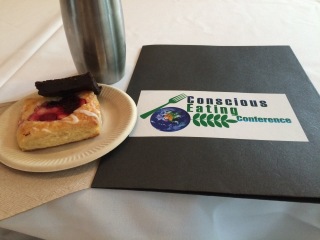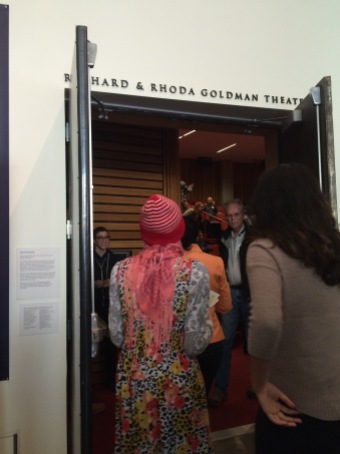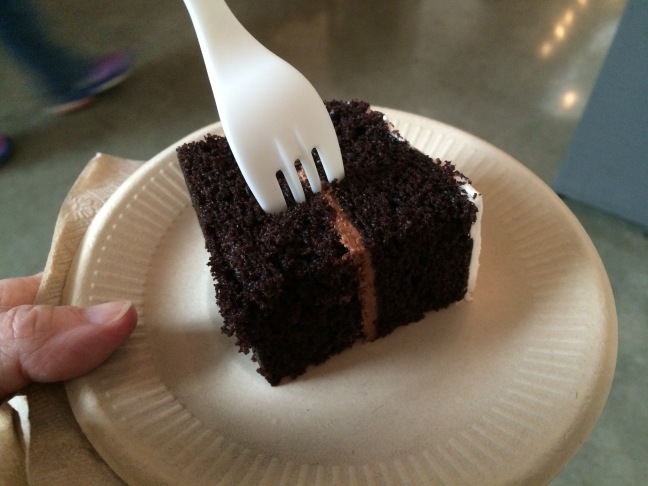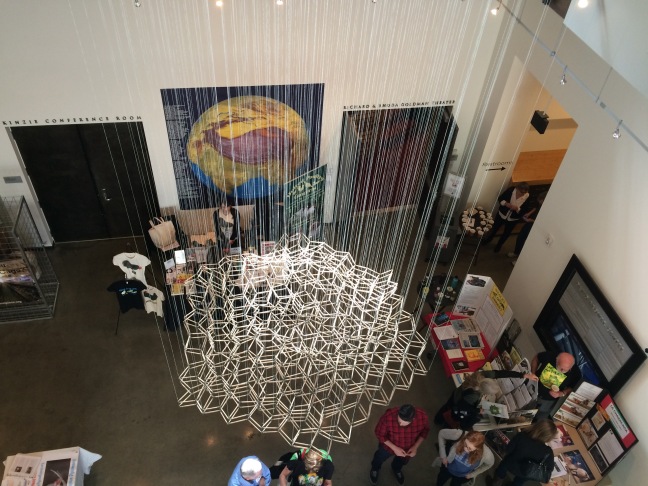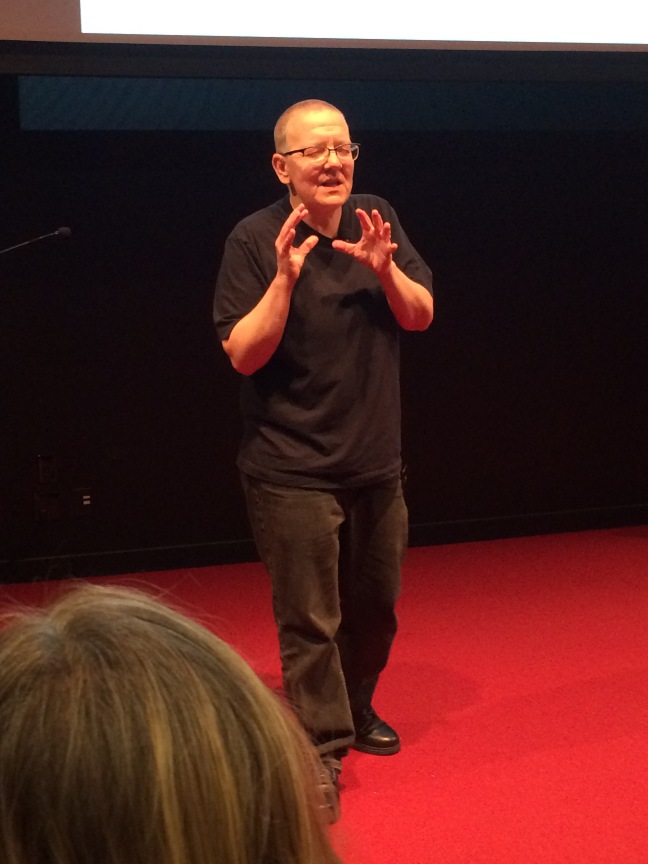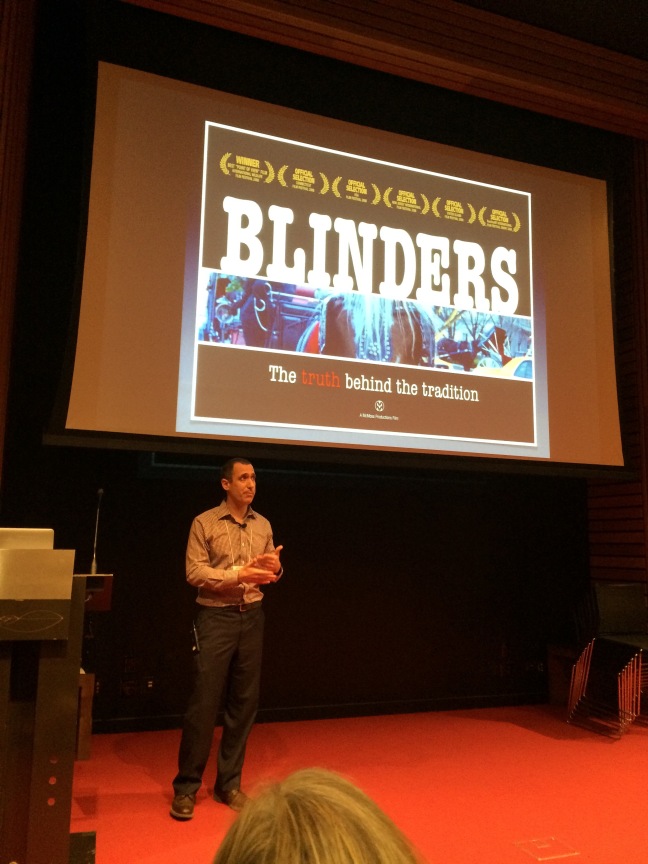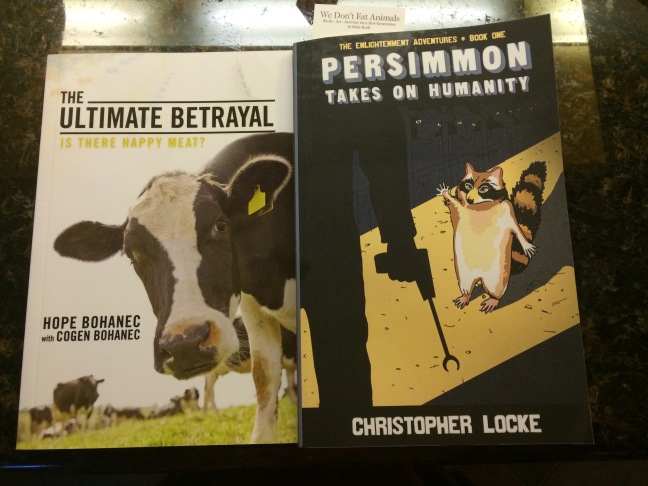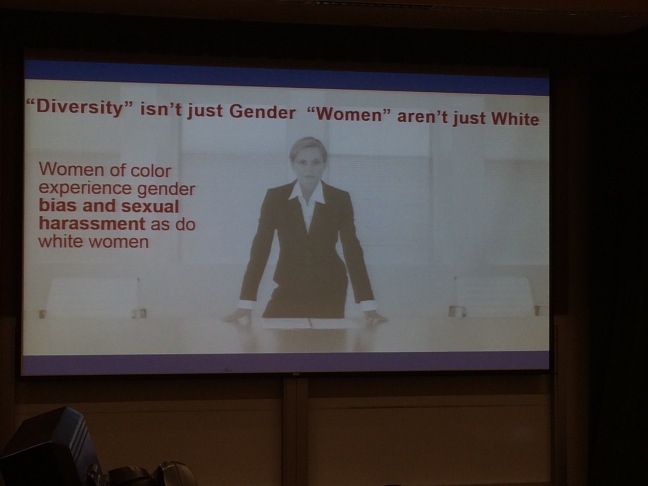Food and Animals: A Personal Reflection
I am a 54-year old educated white woman living in an upper-middle class neighborhood in a liberal city in Northern California. We were the first house on our street to have our Bernie Sanders 2016 yard sign in place. Our home is shared with a rescue dog and two rescue cats. I volunteer at an animal shelter. Until recently I worked at a major public university often referred to as Berzerkeley. I have been vegetarian since 1995, an aspirational vegan for the last year. I sometimes participate in animal rights protests. I am not considered weird in my world.
As a child in the suburbs of Atlanta, Georgia in the 1960s, my thoughts about food and animals were confused at best. I grew up in a household full of human children and non-human animals (of the dog and cat variety, with an occasional frog or turtle my brother brought home from the Fernbank Forest behind our house). What was unusual about our family in that time and place was the fact that we were being raised by a single working mother. We lived in a nice house in a nice neighborhood, went to good schools, and never felt we were deprived on anything materially. But we were the kids whose father died and whose mother didn’t have the time or inclination to cook.
My mother was not a natural or good cook. She never forced us to eat things we didn’t want to. Stories of children being forced to sit at the table until they ate their [insert hated food here] made me sad. I was the strange child who loved my fruits and vegetables. My memories of dinners at my grandmother Nana’s house are about big bowls of succulent green beans, corn on the cob, sliced summer tomatoes, and juicy peaches. I know she served meat, platters of fried chicken being her favorite. My mother wouldn’t eat chicken for years; as a child she visited her grandparents at their farm in Alabama and saw firsthand how the chickens got from the chicken yard to the frying pan. And she told us about it. And I’ve never forgotten. Nana always served leg of lamb with mint jelly for Easter. I wouldn’t eat the lamb, but I loved the mint jelly. It got melty and oozy and oddly delicious next to the hot green beans on the plate.
Our father was of French heritage from an old New Orleans family. He liked to eat what I think of as weird food, frog legs and snails being the ones that I was repelled by but fascinated by as well. Again, my mother told us the gruesome stories about how when she put the frog legs in the frying pan, they would jump out of the hot pan and land on the floor. Maybe there is a scientific explanation for this and maybe Mom was having us on, but the picture of something I never witnessed remains strong in my mind.
As with many children, my favorite books were ones that featured animals. Wind in the Willows by Kenneth Grahame is still one I re-read from time to time and holds a place of honor on my bookshelf. Did I connect Mr. Toad with the real amphibians my father supposedly ate or the ones that my brother kept in shoeboxes on the porch? Not that I remember. Did I connect Wilbur in Charlotte’s Web (E.B. White) to the bacon in the BLTs I liked up until I became obsessed with plain tomato sandwiches after reading Harriet the Spy (Louise Fitzhugh)? I’m pretty sure I didn’t.
I declared myself a vegetarian the first time in 1976 as a 15-year old high school sophomore living with my mother and stepfather at that time in a small town in the Nevada desert. This might have been normal for a teenager living in some places, but not in Gardnerville, a community of ranchers where 4-H was big in school. My friend Kara across the street kept horses, who I was afraid of at first, and sheep. In the pasture were 5 lambs, who grew up to be 5 large sheep. They had names. I thought they were the coolest pets! And then one day the sheep were no longer in the pasture, but cut up in packets in freezer. I never felt the same way about Kara again. Now she was the one who frightened me. I avoided the 4-H kids and spent a lot of time in the art classroom. I would do anything to avoid having to buy the school lunch. Tomato sandwiches and salted carrot sticks remained my reliable go-to lunch.
Then we moved to Sacramento, California, and I fit in a little better. My new friend Julie had a copy of Frances Moore Lappé’s Diet for a Small Planet (1971). There was a vegetarian restaurant in our neighborhood. I left home and went to college the first time (it didn’t stick) in a small town on the Oregon border now famous for its Shakespeare theater. The food in the dorms was horrendous; I lived off of the salad bar and instead of gaining the “freshman 10” that is now the “freshman 15”, I lost that amount of weight. There was a food co-op, the first I’d ever been to, that smelled of cumin and faint vegetable rot. But I met a boy, a beautiful boy from another country where only poor people didn’t eat meat. I followed him halfway around the world, and gave up being vegetarian (although his family did still tease me about my “rabbity” way of preferring the salads and vegetables).
Not all things last. The boy and I are divorced, incompatible in ways beyond food choices. Some things do last. I returned to vegetarianism in 1995 after seeing the move Babe. Where I didn’t make the connection with Wilbur in my childhood, I made the connection with Babe in my adulthood. For some reason, I still didn’t make the connection to fish, and I had no idea of how the dairy industry treated animals, so I continued to eat fish and cheese and eggs. I always felt guilty about the fish, but I still ate their bodies on occasion. This all changed a year ago when I went to the 4th Annual Conscious Eating Conference. I had been exploring ideas around compassion and ethics, and was attracted to the program. I went on a whim, something to do on a Saturday. I haven’t eaten cheese or eggs or fish since, although I sometimes slip-up around milk in my coffee if there is not a non-dairy option available. My boyfriend is a firm lacto-ovo-pescatarian. I know animal activists who won’t share a table with non-vegans, but I don’t feel okay with that stance. And since I do most of the cooking and shopping, the fish and dairy are primarily consumed away from home. I also don’t try to make the dog and cats eat vegan. I still have leather and wool in my closet; I can’t bring myself to give away the shoes and coats and sweaters. I now buy vegan alternatives but still love that sweater I bought on a once-in-a-lifetime trip to Norway and will not part with it.
I am still conflicted, albeit in smaller, more defined ways and I haven’t managed to bring myself to drinking black coffee (and forget giving up coffee). I still have a terrible sweet tooth, but thank goodness for vegan dark chocolate! There are vegan junk foods, so I don’t always manage a healthy diet. What has changed over time is my awareness and the increased ability to link my desire to not harm animals to my choices I make every day. And my comfort with saying “no bacon” when I order at restaurants. Here’s to you, Wilbur. I finally get it.




